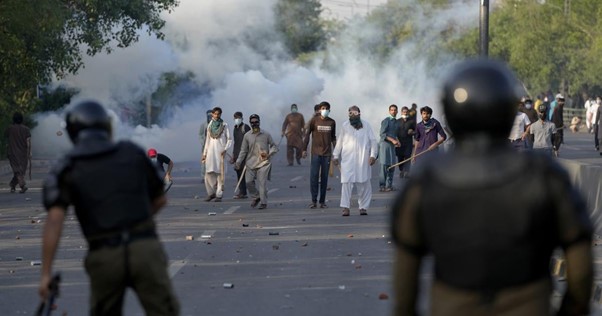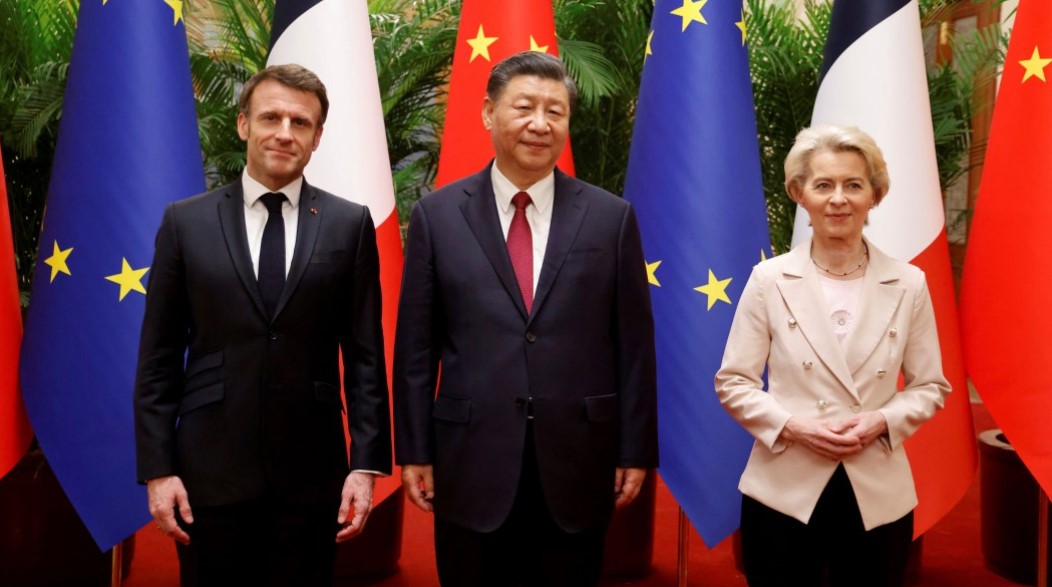
What Leads to a Pakistan Like Economic Crisis
Wed, 08 Feb 2023 | Reading Time: 4 minutes

By Prasenjit Deb
Anyone who is around and aware of the Indian Sub-Continent knows that the last 3 years have been turbulent, to say the least, and no one can deny it. A lot of this situation has to do with the Black Swan Event (Covid-19). It would be an understatement to say that the origins of this event where dubious and not much has come to light and none of the agencies; Intelligence, health or otherwise have attempted to make an effort to investigate the causes, which further raises doubts about the nature and origin of the events.
However, the predictions of a pandemic lurking around were already making rounds since 2016 and a report published in 2017 by Report by US Intelligence Communities warned of this, which no one paid attention to back then.
Covid-19 has tested the strength of economies like never before just like the 19th-century Spanish flu. However, because of trading and IT sector available to us in the 21st century compared to early 20th century, some sectors were able to keep themselves afloat, not just afloat but thrive, a very good example of this was the tech Industries in Silicon Valley, and Southern India. These services and product based industries were able to switch to work from home or hybrid models which lead to savings in office space, supplies, and running costs for a lot of software giants, however the economies that did not have the depth of sectors or economies that depend on only one sector like tourism or only manufacturing were badly hit and could not recover completely which approximately is believed to have wiped out 9 trillion dollars of wealth.
In this article, we are going to have a look at Subcontinent economies like Srilanka, Pakistan, and Nepal. Coming first to Srilanka, which for a very long time enjoyed being the richest economy. However a large chunk of the Srilanka’s Economy was dependent on tourism and the pandemic ensured that the tourism sector was the hardest hit. The Easter bombings and pandemic along with poor governance by the Rajapaksa family ensured the economic devastation of Srilanka, starting a chain of events that ensured an economic collapse for the country. The pseudo-development projects like the Hambantota port and other shoreline projects gave No-return on investments leading to a catastrophic economic debt and meltdown in coming years for the Srilankan economy. If not for the magnanimity of the Indian government the Srilankan people would have suffered enormously from economic pain.
Nepal just like Srilanka was heavily invested in tourism from India and other countries in the West. The pandemic took a similar toll on Nepal’s economy, however the strategic positioning of Nepal between china and India allows it to reap some benefits from both the Asian giants threatening the other of leaning on the other one from time to time. CCP buys influence in Nepal with its deep pockets. The second reason for Nepal faring better then Lanka and Pakistan is foreign remittances. Nepal just like India has a good diaspora in developed economies like Britain, USA, Canada, Australia etc which is also one of the reasons that is keeping it afloat for now.

Annual GDP of Sri Lanka from 1962-2023 : (Macrotrends.net)

Annual GDP growth of Pakistan from 1961 to 2023 : (Macrotrends.net)
The above-shown trends are the economic growth of the countries of Pakistan and Srilanka. The first look at the data from the Srilanka economic story reveals the grass has not always been green for our southern neighbo. From the 1962 SriLanka economy has shrinked 3 times, that is the annual GDP has been below zero and in negative 3 times and the latest being the Black Swan event, however those three times we see a V-shaped recovery
The event and pattern to focus on the Island economy start with certain events the Lankan civil war from 1983 to 2009. The Lankan economy did not bust into sharp increase or saw stable economic growth until 2009 when the civil war in the Island Ended, however, the trend for this seems to be consistent the economies taking a toll for man-made events like civil war catastrophic events like the cyclone and tsunami of 2005.
Focusing on Pakistan, Pakistan has had 4 wars with India and a deadly cyclone in East Pakistan(Now Bangladesh). The graph above shown depicts that pee liberation of Bangladesh, Pakistan has seen the highest growth in the 1970 almost 11% and after 1971 Pakistan never saw this kind of economic growth. The reasons of economic growth not going back was the 1971 war which was started by Pakistan administration, losing the fertile land in East Pakistan and the majority of the population in Pakistan that has lead to economic situation it is in today. The second reason for this is the Western neighbour has relied on international aid for a very long time not focusing on developing internal capabilities like manufacturing ad advanced manufacturing practices like Lean Six-sigma, the major reason for this would be the incapability of polity to stand up to the Military Establishment, the second reason the ruling elite not being vested in the country, having dual citizenship and vested elsewhere.
Observing the trend every time the western neighbor had a war with India its GDP has taken a hit. The reason for pointing this out is that these could have been avoided completely, the self-created problems of Religious extremism and political instability have led to a collapse of demographic dividend, the startup scene in the country is non existent, the labour force required for becoming an advance economy does not exist inside the country.
The existing IMF deals would be causing tremendous amount of pain for the economically marginlaised and this could cause further political instability and distress to the country. The floods last year ensured that the infrastructure would take the heaviest damage ever in the history of the country.
The economic future of Pakistan unlike Sri Lanka does not show any ray of hope of recovering anytime soon, unless the western block decides to shower them with Dollar bills as a counter measure for booming India, or to keep some stress on India’s border. The Pakistan Economic outlook looks very grim.
Disclaimer
The opinions expressed in this article are the author’s own and do not reflect the views of Chanakya Forum. All information provided in this article including timeliness, completeness, accuracy, suitability or validity of information referenced therein, is the sole responsibility of the author. www.chanakyaforum.com does not assume any responsibility for the same.
Chanakya Forum is now on . Click here to join our channel (@ChanakyaForum) and stay updated with the latest headlines and articles.
Important
We work round the clock to bring you the finest articles and updates from around the world. There is a team that works tirelessly to ensure that you have a seamless reading experience. But all this costs money. Please support us so that we keep doing what we do best. Happy Reading
Support Us




















POST COMMENTS (2)
Kalidan Singh
Aditya